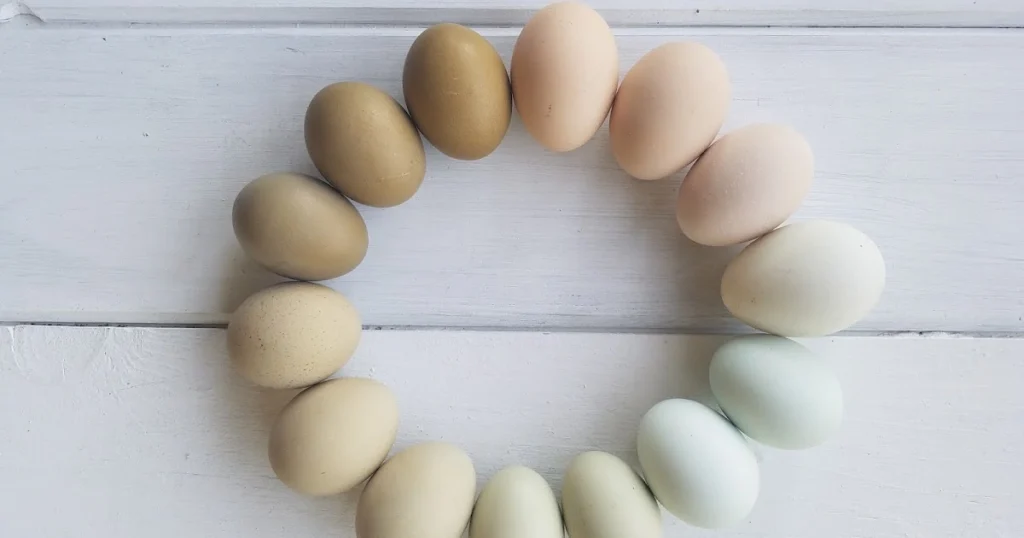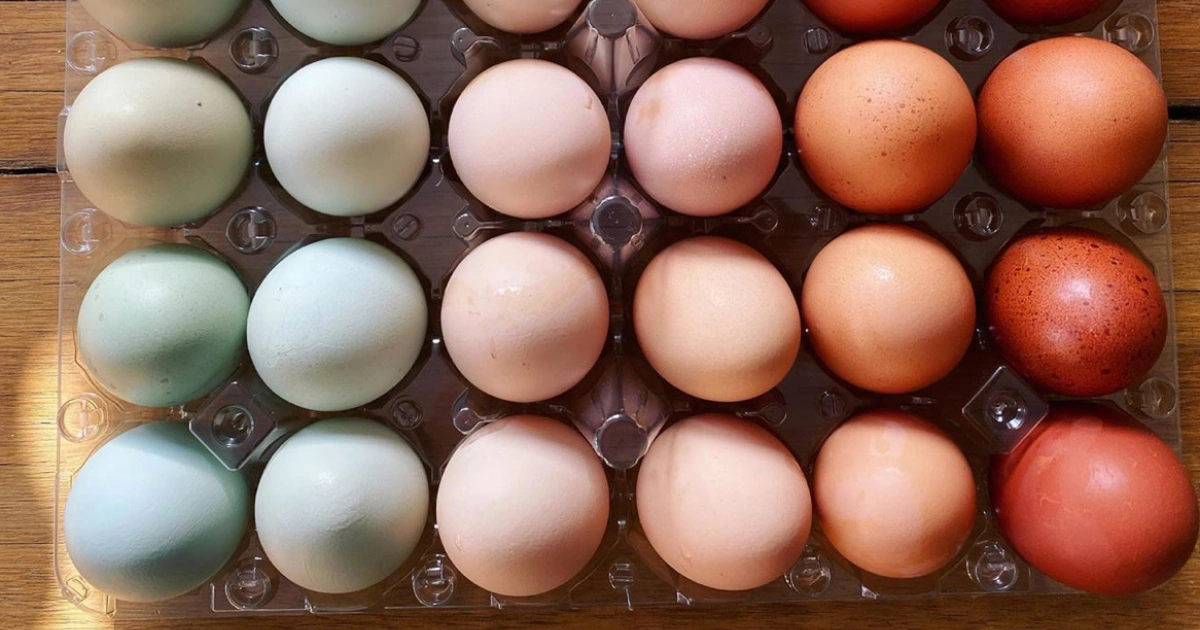Raising chickens in your backyard isn’t just rewarding—it’s colorful, too. From vibrant shell hues to breed personalities, each type of hen brings something unique to your home flock. Whether you’re new to keeping chickens or looking to diversify your coop, understanding which breeds lay which egg colors can help you plan the perfect flock for both egg variety and personality.
In this guide, you’ll discover some of the most popular chicken breeds for backyard setups and learn about the eggs they produce—including rare and multicolored types.

Why Egg Color Matters
While egg color doesn’t affect taste or nutritional value, it adds an appealing aesthetic to your basket. Many backyard chicken keepers enjoy collecting a rainbow of eggs—brown, white, blue, green, and even speckled shells. These colors are determined by the breed’s genetics and can even vary slightly within the same breed.
Popular Chicken Breeds and the Eggs They Lay
Rhode Island Red
- Egg Color: Medium to dark brown
- Best For: High productivity, hardiness
Rhode Island Reds are among the most dependable layers you can raise. They thrive in various climates and are well-known for their consistent production of rich brown eggs. Their calm temperament and low maintenance make them ideal for beginners.
Leghorn
- Egg Color: White
- Best For: Prolific laying, warm climates
Leghorns are small, energetic birds that lay a large number of bright white eggs. If you’ve ever bought eggs at the supermarket, chances are they came from a Leghorn or a similar breed. These hens are excellent for households that prioritize egg production over cuddly behavior.
Speckled Sussex
- Egg Color: Deep brown, sometimes with speckles
- Best For: Friendly temperament, ornamental appeal
These gentle hens have eye-catching plumage and produce flavorful, dark brown eggs. They are known for their docile nature, making them perfect for families with children or those new to poultry keeping.
Easter Egger
- Egg Color: Blue, green, olive, or light brown
- Best For: Color variety, novelty
Easter Eggers are hybrids that carry the blue-egg gene. They’re unpredictable in the best way—each bird may lay a different color, and their eggs are often pastel shades not found in other breeds. Great for adding a colorful twist to your egg basket.
Plymouth Rock (Barred Rock)
- Egg Color: Light to medium brown
- Best For: All-purpose use, cold climates
Plymouth Rocks are classic American chickens valued for both meat and egg production. They lay medium to large brown eggs and are easy-going, making them a popular dual-purpose breed.
Marans
- Egg Color: Dark brown to chocolate, sometimes olive in hybrids
- Best For: Gourmet eggs, rare color
Marans are prized for their extra-dark eggs, which can range from deep red-brown to almost black. Some hybrid versions, such as Olive Eggers, are created by crossing Marans with blue-laying breeds to get stunning olive-colored eggs.
Tips for Raising a Diverse Egg-Laying Flock
Creating a flock that provides a variety of egg colors is not only fun but also functional. Here are a few ways to keep your hens healthy and productive:
- Provide balanced nutrition with high-quality layer feed and access to fresh greens.
- Maintain clean nesting boxes to prevent egg breakage and encourage laying.
- Offer plenty of space, as overcrowding can reduce laying frequency and increase stress.
- Rotate breeds each year if you want to experiment with different egg colors.
How to Identify Egg Color Before Laying Begins
Chickens typically start laying between 5 and 7 months of age, depending on the breed. While egg color isn’t visible until the first egg is laid, you can often predict it based on the breed. Some experienced chicken keepers also look at the earlobe color—white earlobes often correlate with white eggs, while red earlobes are more likely to produce brown or colored eggs.
Frequently Asked Questions
Do different egg colors taste different?
No, egg color does not affect flavor or nutrition. Taste differences are more influenced by the hen’s diet and environment.
Can one chicken lay multiple egg colors?
No, each hen will consistently lay the same color egg for life. However, egg shade may vary slightly with age or season.
Which breed lays the most colorful eggs?
Easter Eggers and hybrids like Olive Eggers are known for producing a wide range of colors, including blue, green, and pinkish hues.
What’s the best beginner-friendly chicken breed?
Rhode Island Reds and Plymouth Rocks are excellent choices for new chicken keepers due to their temperament and productivity.
Are dark eggs more nutritious?
All eggs have similar nutritional profiles, regardless of shell color. Darker shells are simply a result of breed-specific pigmentation.
Internal Linking Suggestions from secretsofthegreengarden.com
- How to Build a Chicken Coop from Scratch
- Top Organic Feed Options for Backyard Chickens
- Composting Chicken Manure for Garden Use
External Resource Suggestions
- Backyard Poultry Magazine – Breed Profiles
- The Livestock Conservancy – Chicken Breeds
- Purdue University Extension – Small Flock Egg Production
Conclusion
Raising backyard hens offers more than just fresh eggs—it brings a delightful range of colors and breed personalities right to your garden. Whether you’re aiming for a rainbow basket or simply a steady supply of breakfast staples, the right mix of chicken breeds can meet your goals. With a little planning and care, your flock will reward you with both beauty and bounty.
Summary for SEO
- Main keyword: egg-laying chicken breeds
- LSI/NLP keywords used: backyard chickens, egg color chart, brown eggs, blue eggs, white egg layers, beginner chicken breeds, Easter Egger, Marans eggs, colorful egg layers
- Internal link suggestions:
- How to Build a Chicken Coop from Scratch
- Top Organic Feed Options for Backyard Chickens
- Composting Chicken Manure for Garden Use
- External link suggestions:


hello!,I really ike your writin so much! proportion we keeep up a correspondence more abvout
your post onn AOL? I need a speccialist onn this arewa to reseolve my problem.
Maay bee thjat is you! Having a look forward tto seee you.
**mind vault**
mind vault is a premium cognitive support formula created for adults 45+. It’s thoughtfully designed to help maintain clear thinking
برای دوستانی که به دنبال یک راهکار مطمئن برای وریفای حساب در بروکرهای فارکس هستند، پیشنهاد میکنم خدمات شوپی را بررسی کنند. این مجموعه به صورت تخصصی، وریفای قانونی حساب های فارکس را با مدارکی ارائه میدهد که کاملاً معتبر بوده و به نام خودتان صادر میشود. این روش دائمی است و ریسک بلاک شدن حساب شما را به صفر میرساند. کیفیت و پشتیبانیشان واقعاً عالی است.
https://t.me/s/Martin_casino_officials
آیدی کارت اماراتی که از گرافیسو گرفتم از نظر ظاهری کاملاً رسمی و واقعی بود. تیمشون حتی جزئیات ریز مثل مهر رسمی و طرح امنیتی زیر سطح کارت رو هم بازسازی کرده بودن. اگر دنبال آی دی کارت واقعی UAE امارات (دوبی) هستید، مطمئناً از این کیفیت رضایت کامل خواهید داشت. خیلی تمیز و دقیق.
به جز زیبایی ظاهری، چیزی که من رو شگفتزده کرد جزئیات امنیتی کارت بود. گرافیسو در خدمات آیدی کارت امارات (دوبی) واقعاً استانداردها رو رعایت میکنه. کارت چاپ برجسته، QR اختصاصی و حتی انعکاس نور زیر هولوگرام دقیقاً مثل نسخه دولتیه. تجربهای کاملاً حرفهای بود.